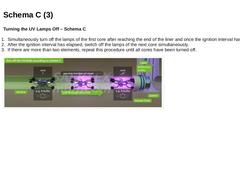
|
Turning the UV Lamps Off – Schema C
-
Simultaneously turn off the lamps of the first core after reaching the end of the liner and once the ignition interval has elapsed.
-
After the ignition interval has elapsed, switch off the lamps of the next core simultaneously.
-
If there are more than two elements, repeat this procedure until all cores have been turned off.
(Image: Turning the UV lamps off – Schema C) |
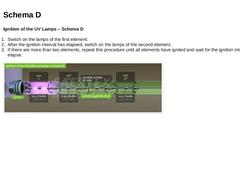
|
Ignition of the UV Lamps – Schema D -
Switch on the lamps of the first element.
-
After the ignition interval has elapsed, switch on the lamps of the second element.
-
If there are more than two elements, repeat this procedure until all elements have ignited and wait for the ignition interval to elapse.
(Image: Ignition of the UV lamps – Schema D) |

|
Pulling in the UV Light Source Chain – Schema D -
Commence pulling in once the ignition process has finished.
-
Pull the first 0.5 m at half of the minimum curing speed.
-
Then, increase the speed to the minimum curing speed.
-
Reduce the speed to half the minimum curing speed 0.5 m before reaching the end of the liner.
(Image: Minimum curing speed - Schema D) |
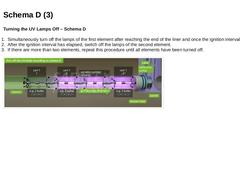
|
Turning the UV Lamps Off – Schema D -
Simultaneously turn off the lamps of the first element after reaching the end of the liner and once the ignition interval has elapsed.
-
After the ignition interval has elapsed, switch off the lamps of the second element.
-
If there are more than two elements, repeat this procedure until all elements have been turned off.
(Image: Turning the UV lamps off – Schema D) |
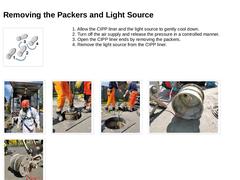
|
1. Allow the CIPP liner and the light source to gently cool down.
2. Turn off the air supply and release the pressure in a controlled manner.
3. Open the CIPP liner ends by removing the packers.
4. Remove the light source from the CIPP liner. (Image: The removal of the packers takes place with appropriate protective equipment) (Image: Removal of the packers) (Image: Removal of the packers 1) (Image: Removal of the packers – detail … |
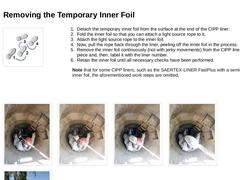
|
-
Detach the temporary inner foil from the surface at the end of the CIPP liner.
-
Fold the inner foil so that you can attach a light source rope to it.
-
Attach the light source rope to the inner foil.
-
Now, pull the rope back through the liner, peeling off the inner foil in the process.
-
Remove the inner foil continuously (not with jerky movements) from the CIPP liner in one piece and, then, label it with the liner number.
-
Retain …
|
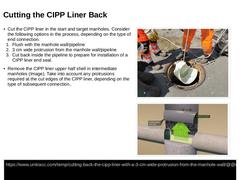
|
-
Cut the CIPP liner in the start and target manholes. Consider the following options in the process, depending on the type of end connection.
-
Flush with the manhole wall/pipeline
-
3 cm wide protrusion from the manhole wall/pipeline
-
Cut back inside the pipeline to prepare for installation of a CIPP liner end seal.
-
Remove the CIPP liner upper half shell in intermediate manholes (Image). Take into account any protrusions required at the cut edges …
|
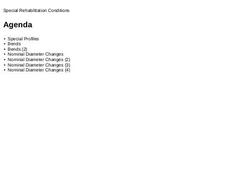
|
|
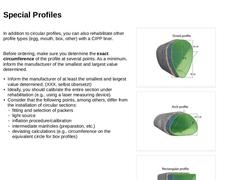
|
In addition to circular profiles, you can also rehabilitate other profile types (egg, mouth, box, other) with a CIPP liner.
Before ordering, make sure you determine the exact circumference of the profile at several points. As a minimum, inform the manufacturer of the smallest and largest value determined.
-
Inform the manufacturer of at least the smallest and largest value determined.
-
Ideally, you should calibrate the entire section under rehabilitation (…
|
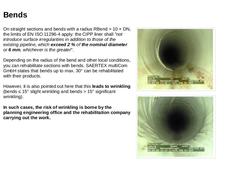
|
On straight sections and bends with a radius RBend > 10 × DN, the limits of EN ISO 11296-4 apply: the CIPP liner shall "not introduce surface irregularities in addition to those of the existing pipeline, which exceed 2 % of the nominal diameter or 6 mm, whichever is the greater".
Depending on the radius of the bend and other local conditions, you can rehabilitate sections with bends. SAERTEX multiCom GmbH states that bends up to max. 30° can be rehabilitated …
|
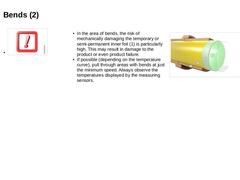
|
-
In the area of bends, the risk of mechanically damaging the temporary or semi-permanent inner foil (1) is particularly high. This may result in damage to the product or even product failure.
-
If possible (depending on the temperature curve), pull through areas with bends at just the minimum speed. Always observe the temperatures displayed by the measuring sensors.
(Image: Typical wall construction of lining tube ) |

|
With "Lining with cured-in-place pipes", depending on the system limit of the manufacturer, nominal diameter changes can also be rehabilitated in one section. General information on changing nominal diameters in one section using the SAERTEX-LINER as an example: -
In this special application, the SAERTEX-LINER is produced with a temporary inner foil of the larger nominal diameter. This exhibits a significant over-sized area where the smaller nominal …
|
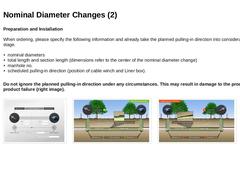
|
Preparation and Installation When ordering, please specify the following information and already take the planned pulling-in direction into consideration at this stage.
-
nominal diameters
-
total length and section length (dimensions refer to the center of the nominal diameter change)
-
manhole no.
-
scheduled pulling-in direction (position of cable winch and Liner box).
Do not ignore the planned pulling-in direction under any circumstances. This may … |
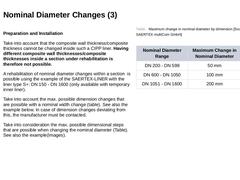
|
Preparation and Installation Take into account that the composite wall thickness/composite thickness cannot be changed inside such a CIPP liner. Having different composite wall thicknesses/composite thicknesses inside a section under rehabilitation is therefore not possible. A rehabilitation of nominal diameter changes within a section is possible using the example of the SAERTEX-LINER with the liner type S+: DN 150 - DN 1600 (only available with temporary … |
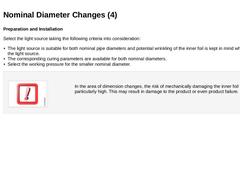
|
Preparation and Installation Select the light source taking the following criteria into consideration: -
The light source is suitable for both nominal pipe diameters and potential wrinkling of the inner foil is kept in mind when selecting the light source.
-
The corresponding curing parameters are available for both nominal diameters.
-
Select the working pressure for the smaller nominal diameter.
In the area of dimension changes, the risk … |

|
Jul 21, 2021
News
Kathryn Langley
Mounting pressure on utilities to achieve zero pollution events has accelerated sewer investment and action planning but rising main sewers pose a unique challenge. Better analysis of existing data can mitigate risks, says George Heywood, analytics innovation lead for technology specialist Ovarro.
|

|
Jul 22, 2021
News
Lila Thompson
The boards of British Water and the Water Industry Forum have confirmed that the proposed merger of their two organisations is to go ahead and will now prepare detailed plans and agree the timetable leading to merger later this year.
|

|
Jul 23, 2021
News
Steve Calk
RealPage, Inc., a leading global provider of software and data analytics to the real estate industry, today announced the launch of Smart Water, the first solution in the multifamily industry that leverages submeter technology to significantly reduce the cost of water management for both residential units and common areas.
|

|
Aug 11, 2021
News
U.I. Lapp GmbH
No More Snail’s Pace: Tunnel Construction for the Mobility Transition
|

|
Dec 01, 2020
News
David Armstrong
Leading water engineering solutions company, ELIQUO Hydrok, welcome Peter Wroe as Chief Financial Officer (CFO) as of October 2020; with his remit to further develop the future growth strategy of the company and build upon the reputation for quality and service in partnership with all UK water utility companies.
|

|
Dec 03, 2020
News
Dr. Annabelle Houdret
2.1 billion people have no access to clean drinking water and more than 4.5 billion have no safe sanitation. In many countries, increasing water scarcity threatens food security and energy production or leads to conflict.
|
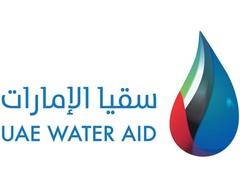
|
Dec 09, 2020
News
Khuloud Al Ali
The UAE Water Aid Foundation (Suqia UAE), under the Mohammed bin Rashid Al Maktoum Global Initiatives, has opened registration for the 3rd Mohammed bin Rashid Al Maktoum Global Water Award. The award, with total prizes worth USD 1 million, aims to find sustainable and innovative solutions for water scarcity.
|
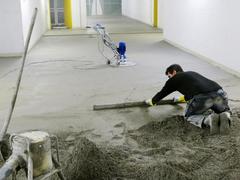
|
Dec 10, 2020
News
Saki M. Moysidis
With its new fast-hardening cement MC-Floor TurboCem, MC-Bauchemie has hit the market with a truly one-for-all solution. An advanced ternary binder, this product is suitable for screeds that need to be both dimensionally stable and ready for covering at an early stage – whether for residential, commercial or industrial duty.
|
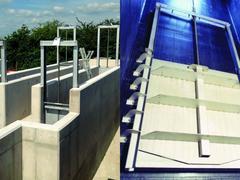
|
Dec 11, 2020
News
Julia Nixon
Glenfield Invicta has been awarded penstock supply, installation and service framework contracts by Thames Water. The framework contracts are for an initial three years with the potential for a further five years extension. The contracts came into operation on 1 October 2020.
|

|
Dec 14, 2020
News
Hadi Hamdoun
To help tackle the prevailing challenge of access to potable water in remote communities of Madagascar, the UAE-driven humanitarian initiative, 20by2020, recently installed ‘Safe Water Cube’ fountains across five rural areas of the East African country, with the aim of improving the quality of life for approximately 8,500 people on a daily basis.
|